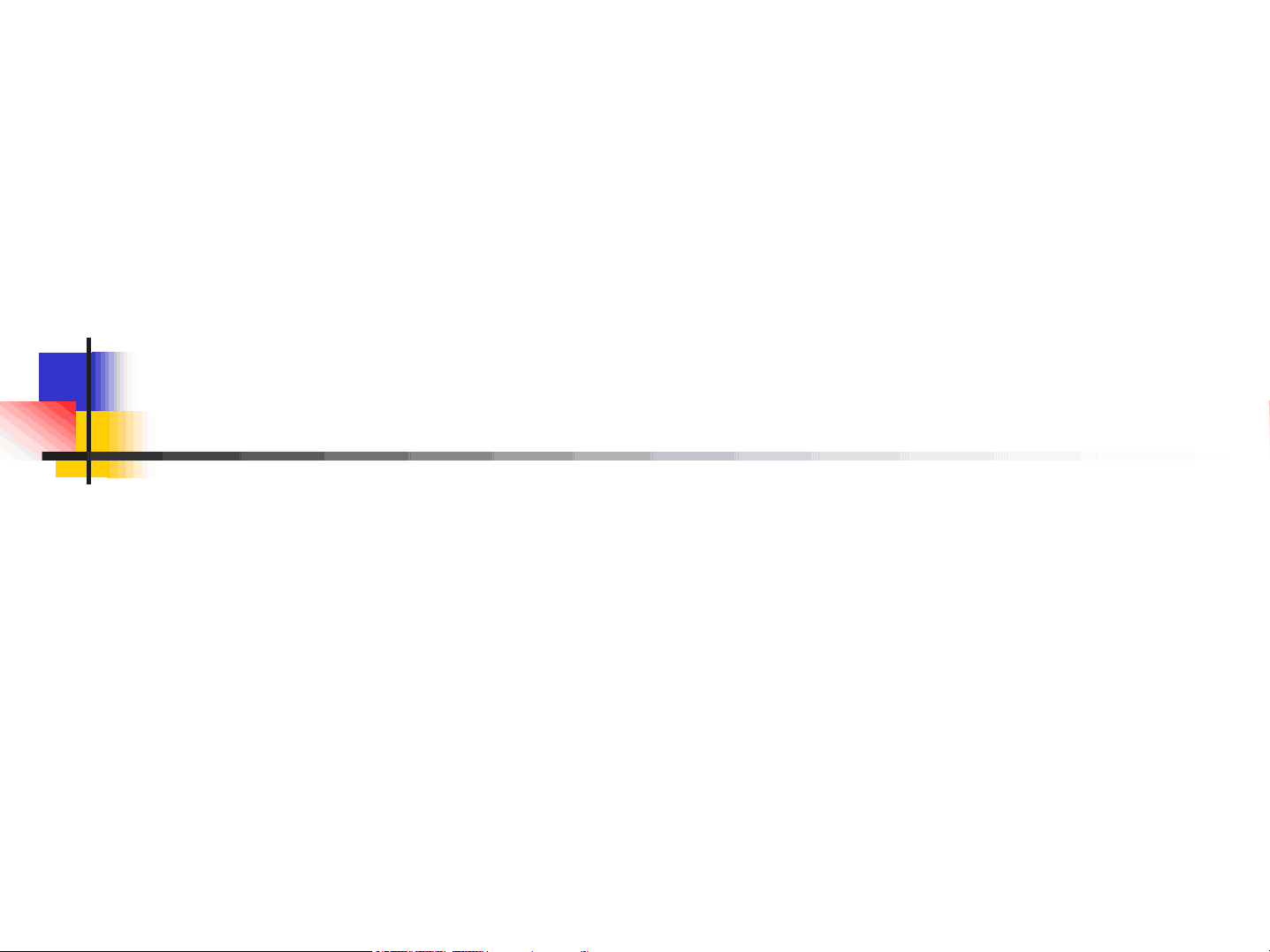
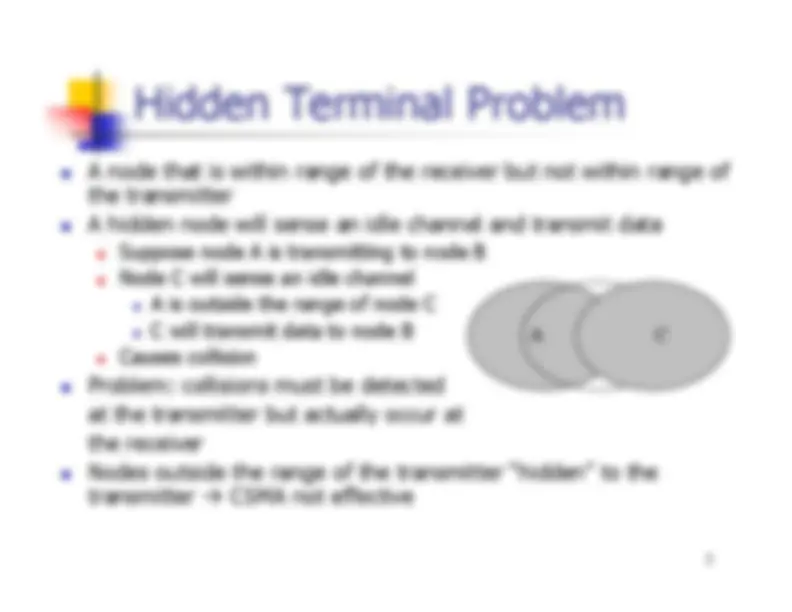
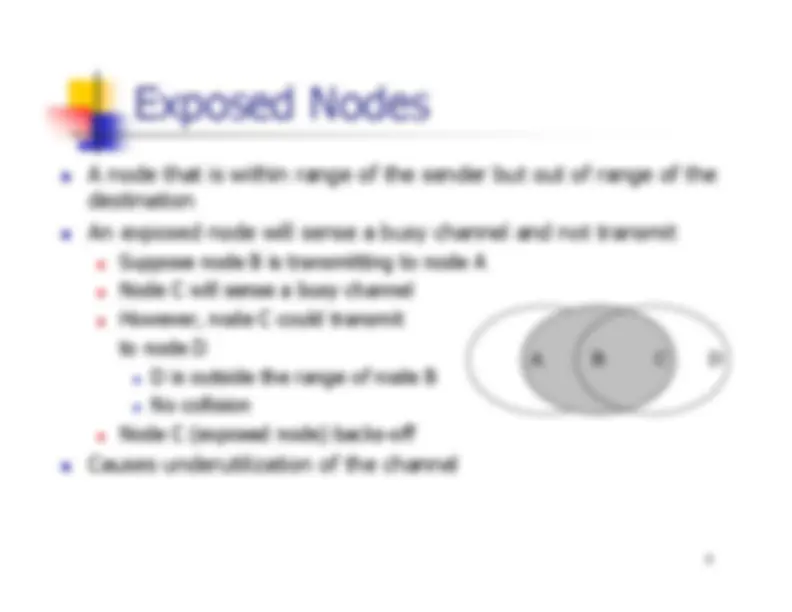
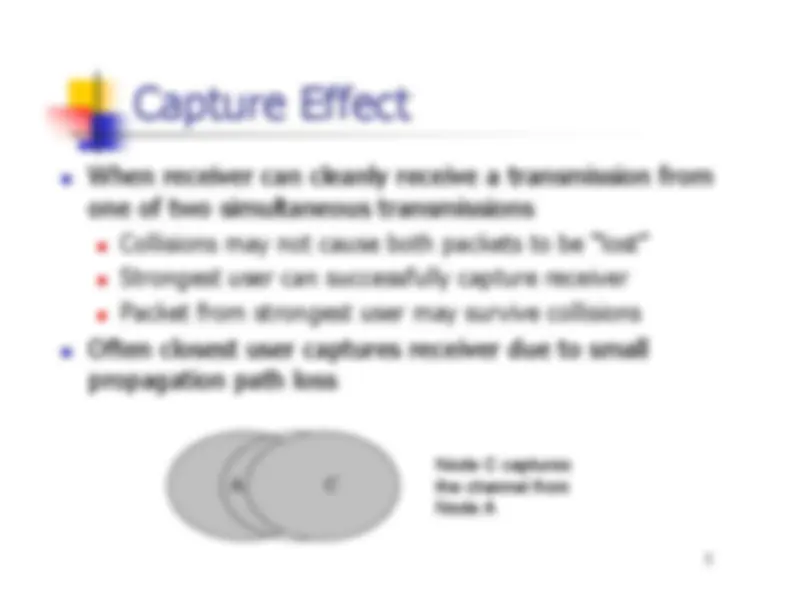
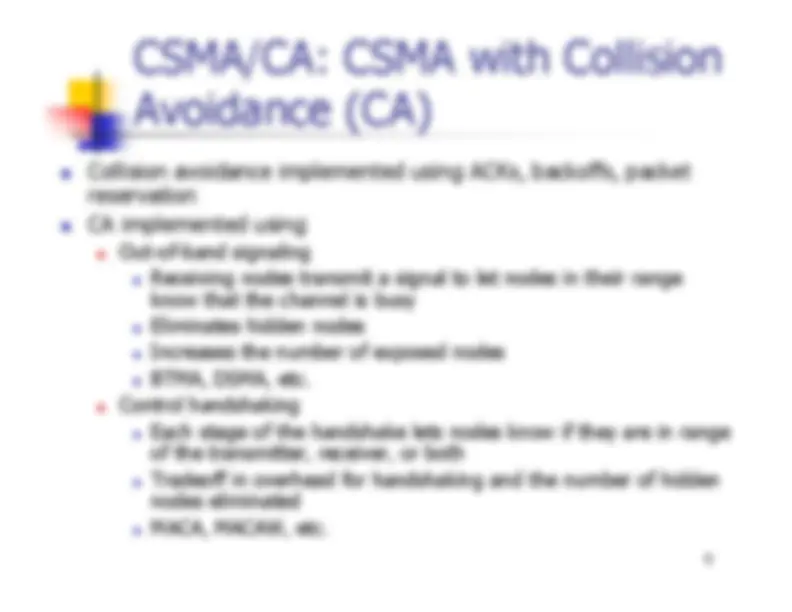
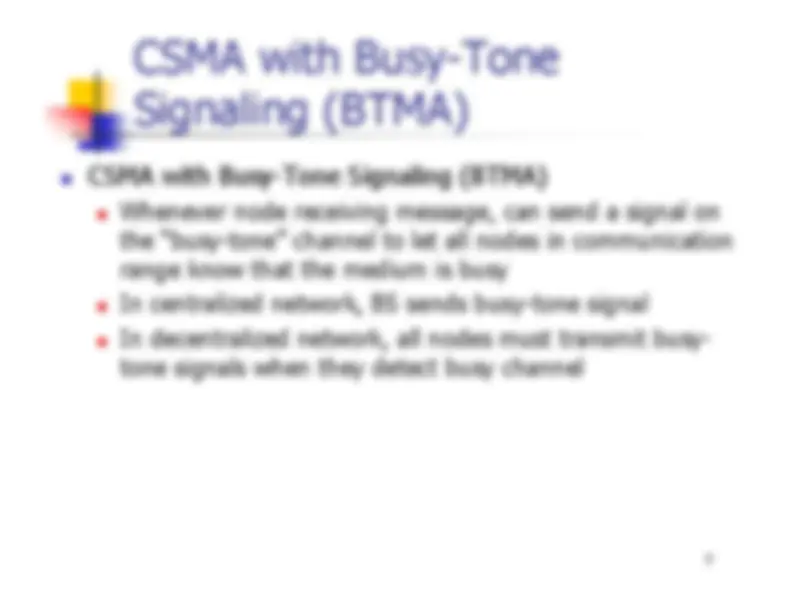
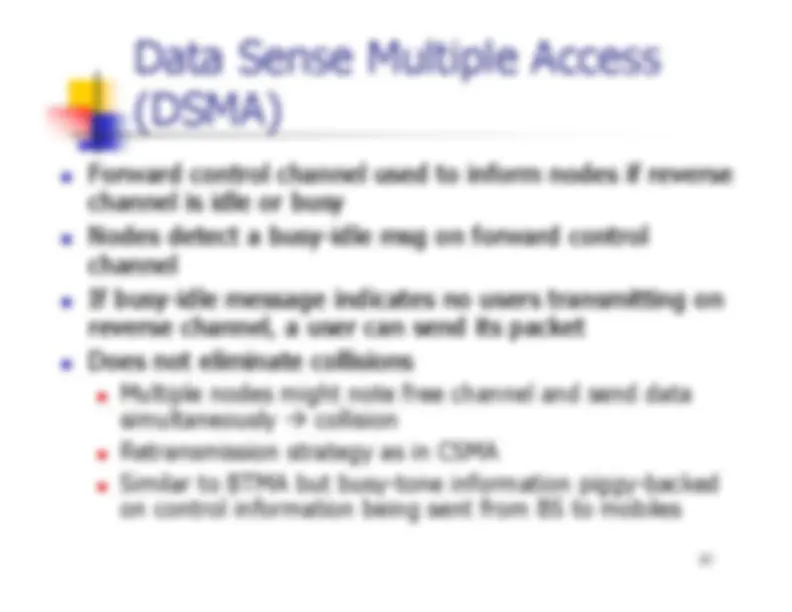
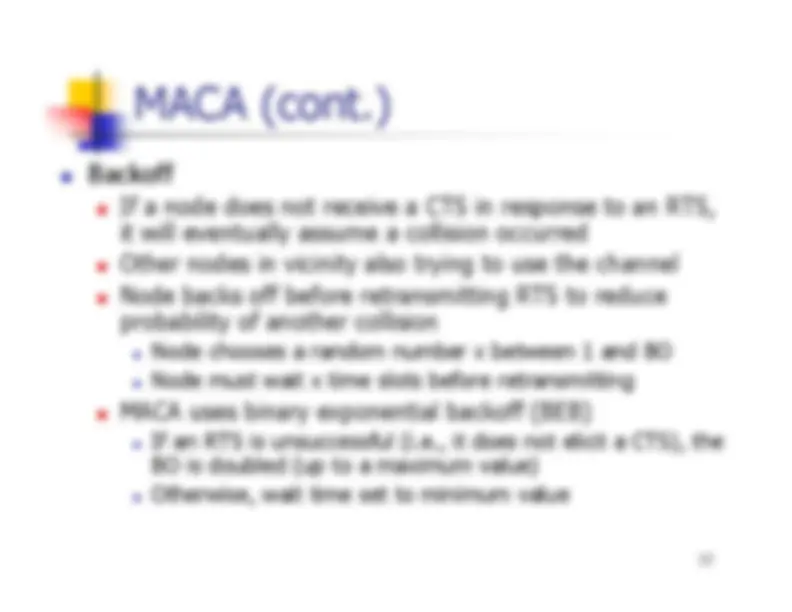
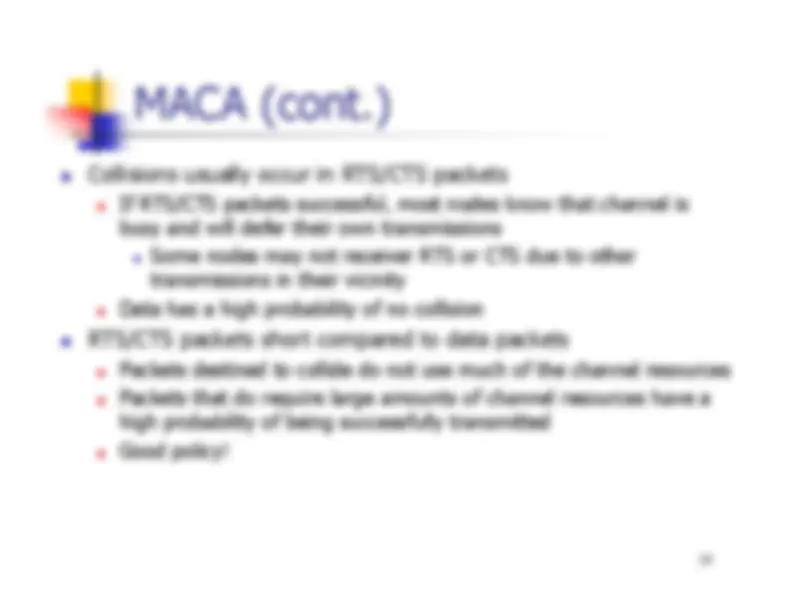
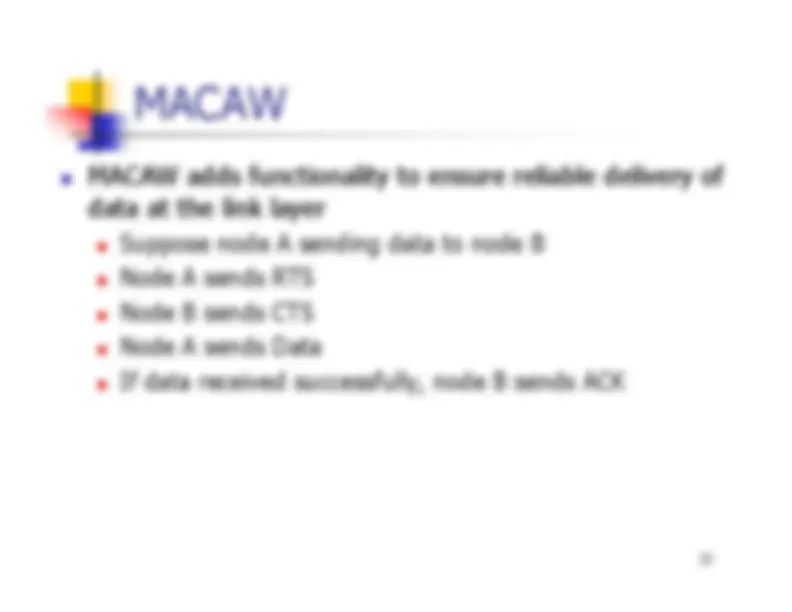
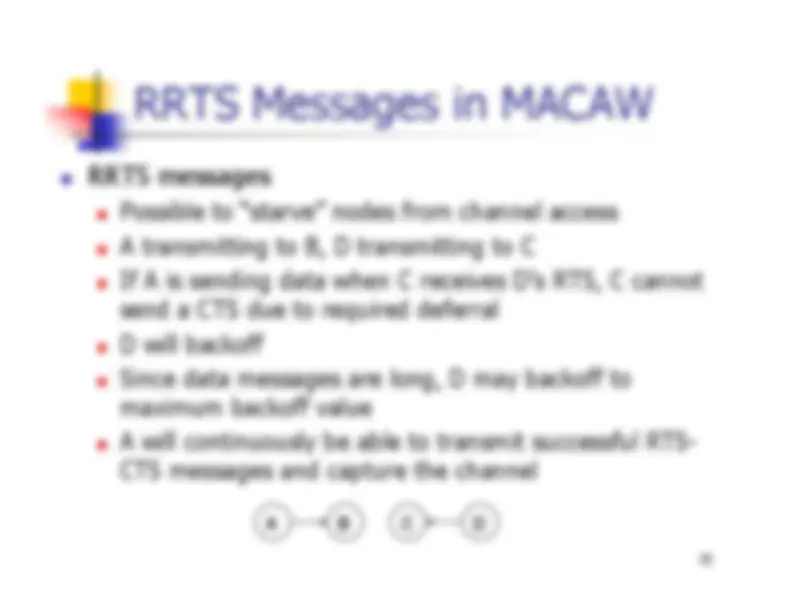
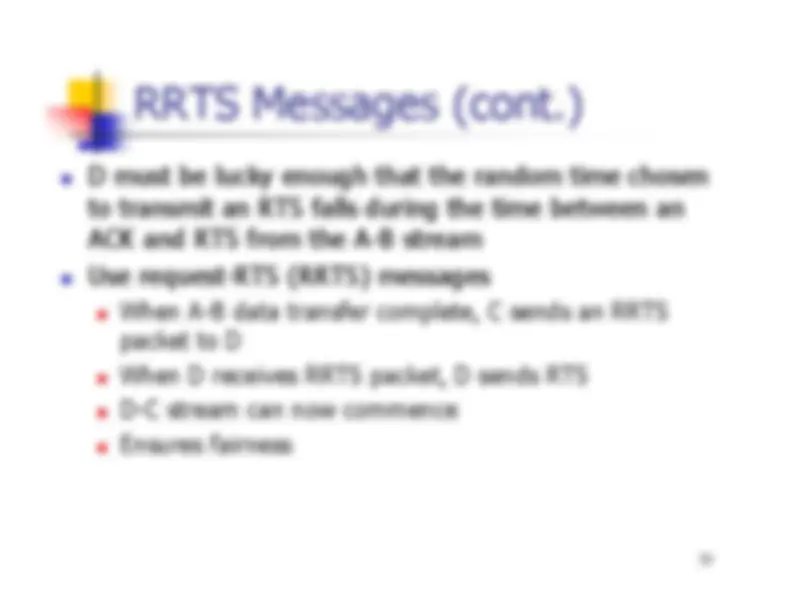
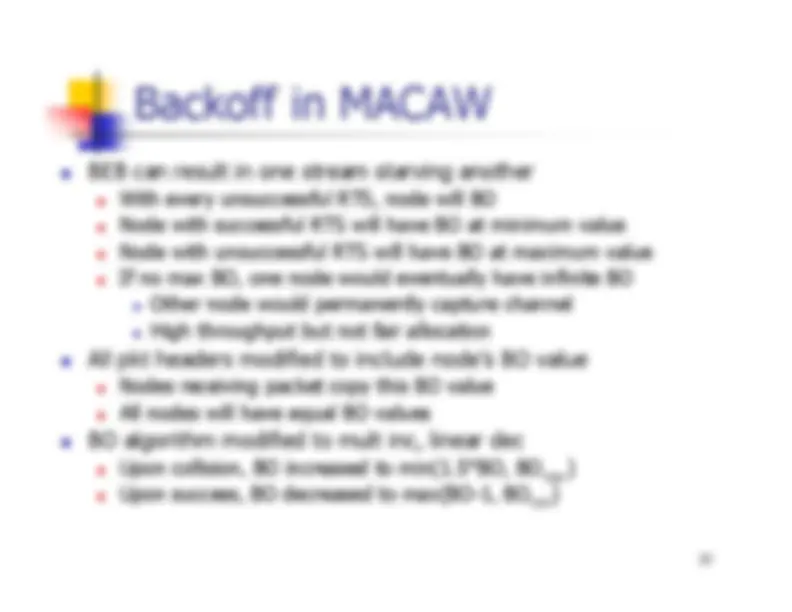
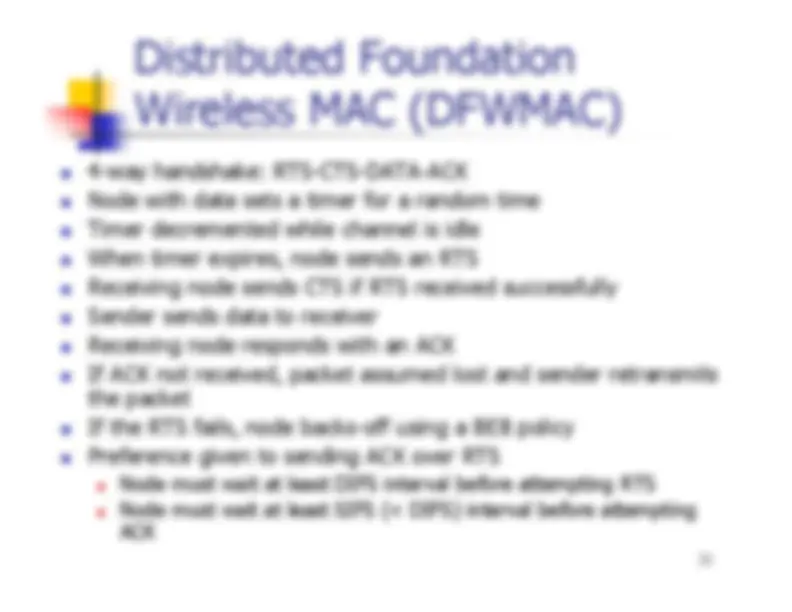
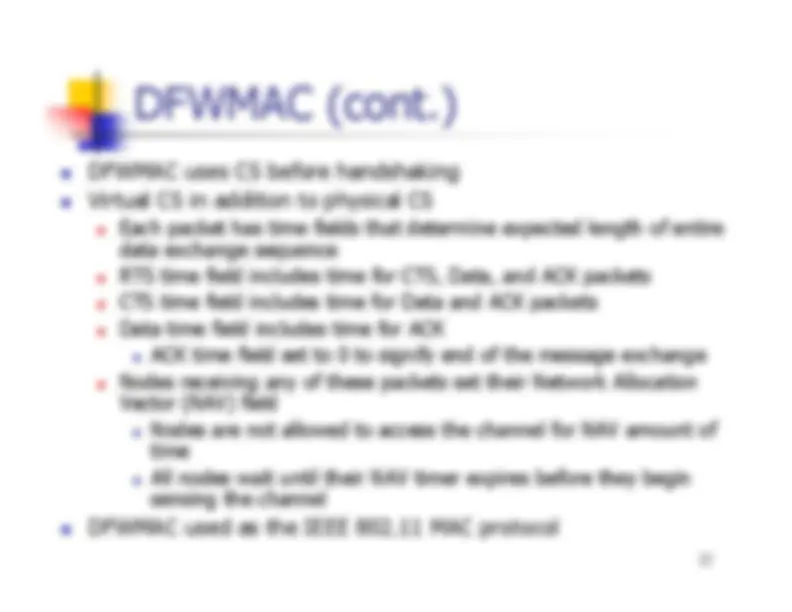
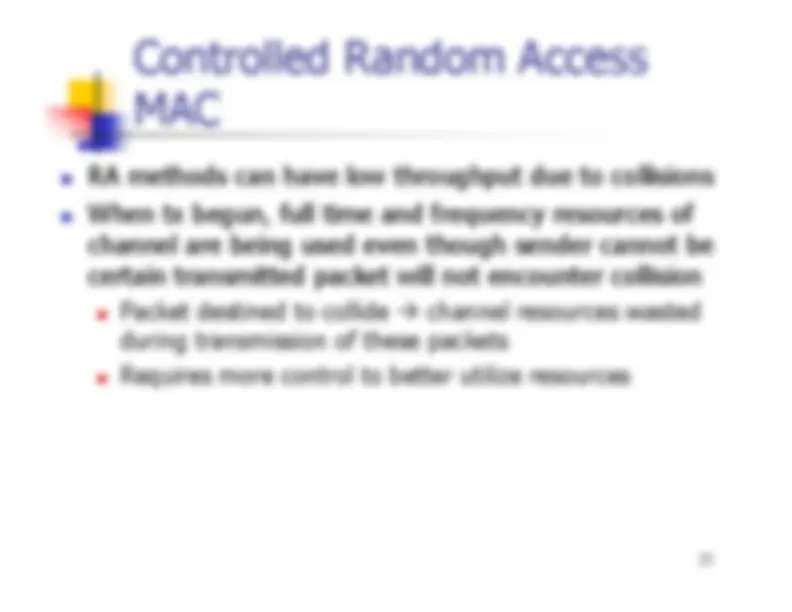
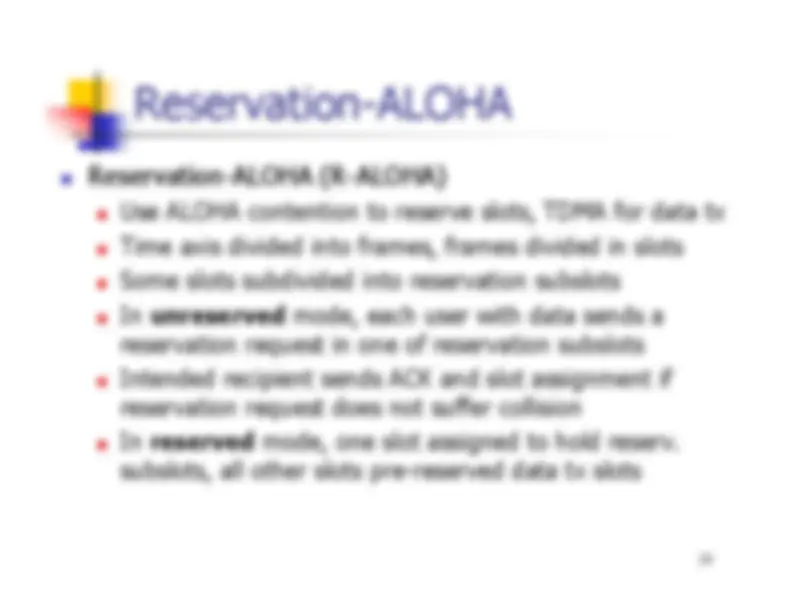
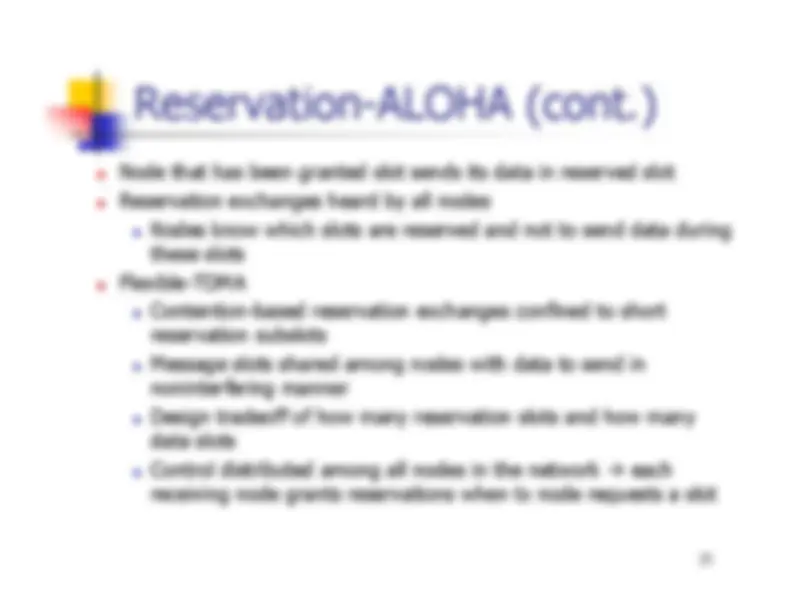
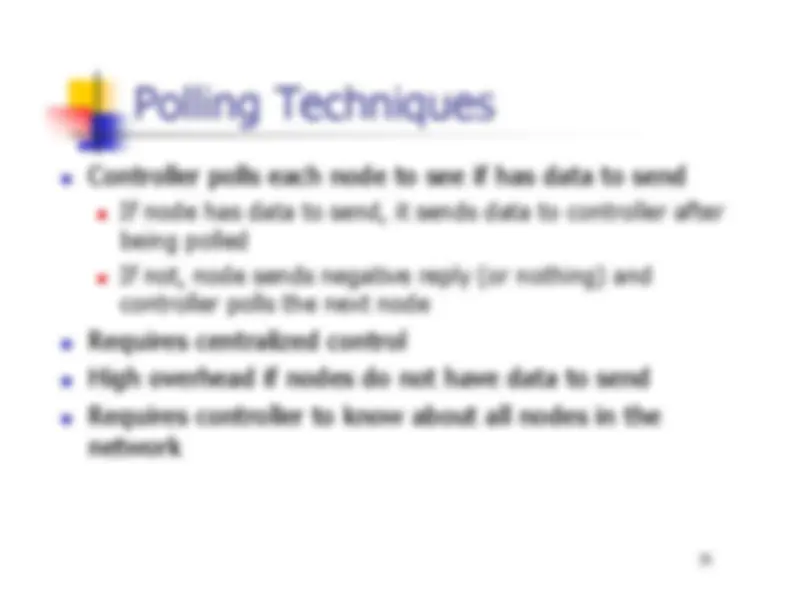
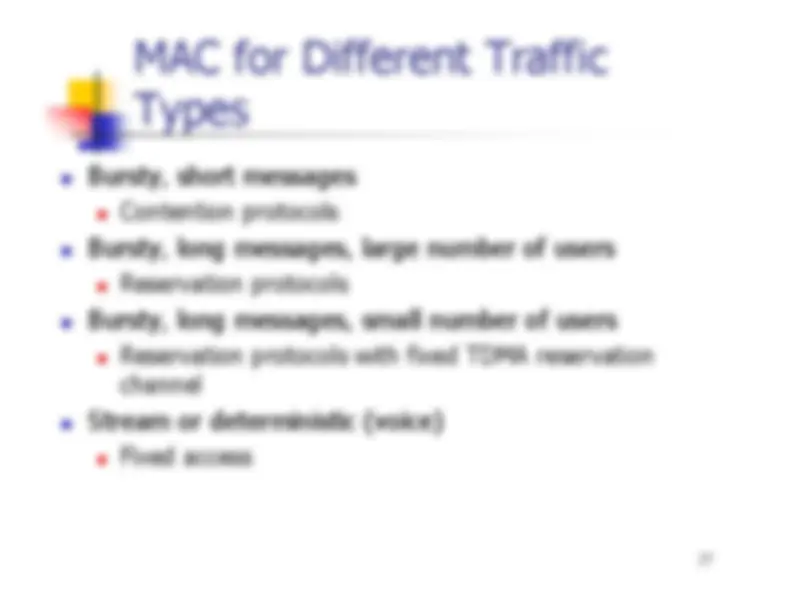

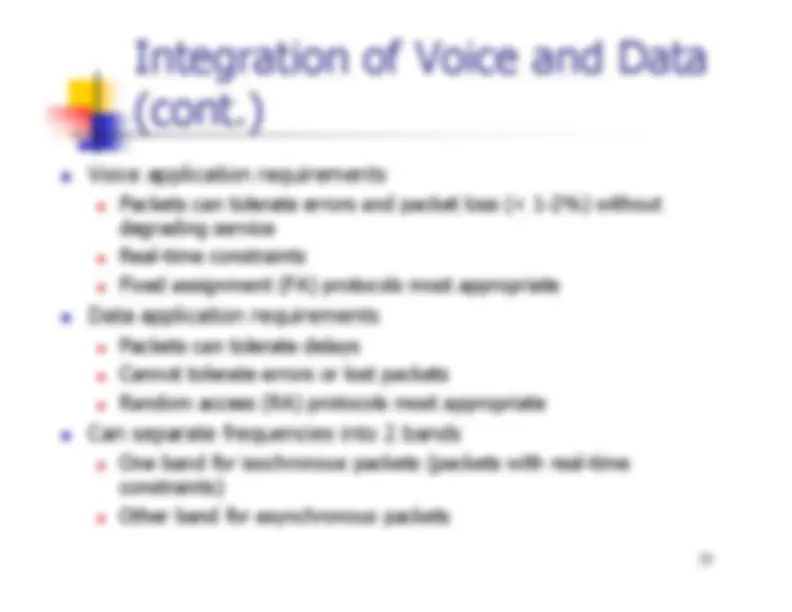
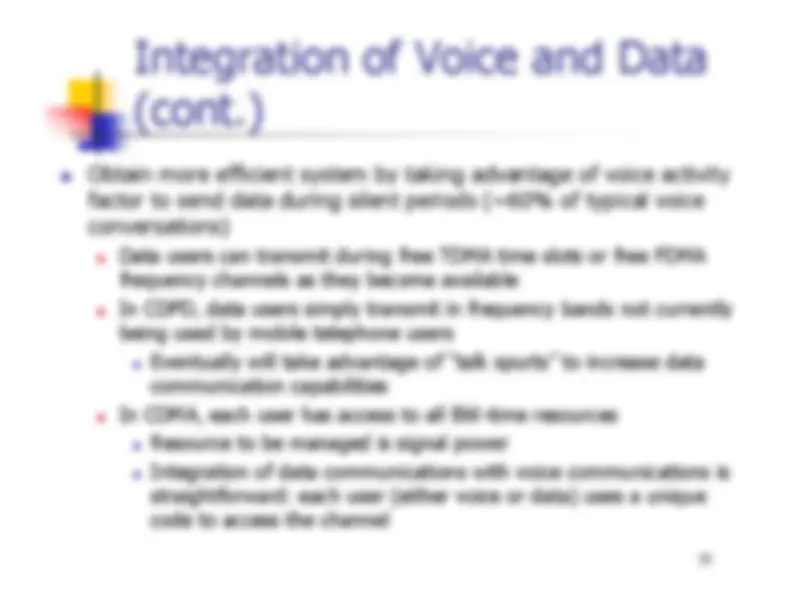
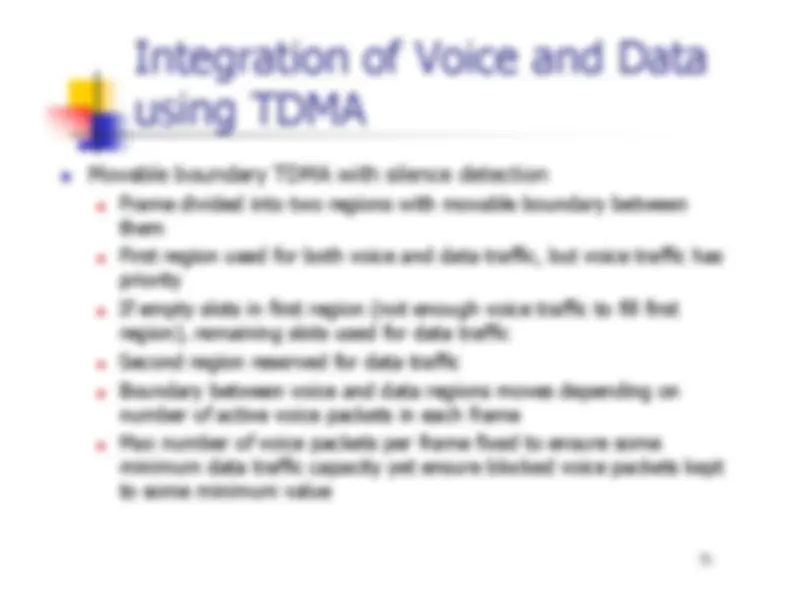
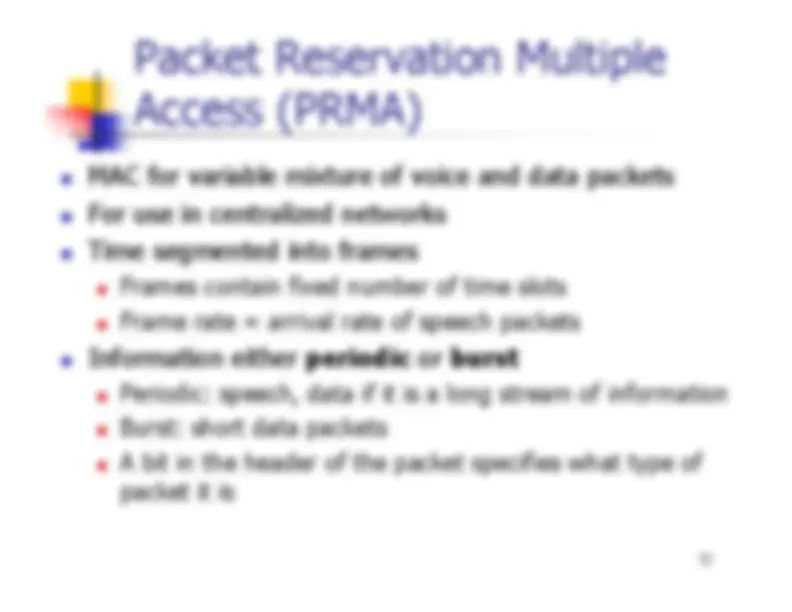
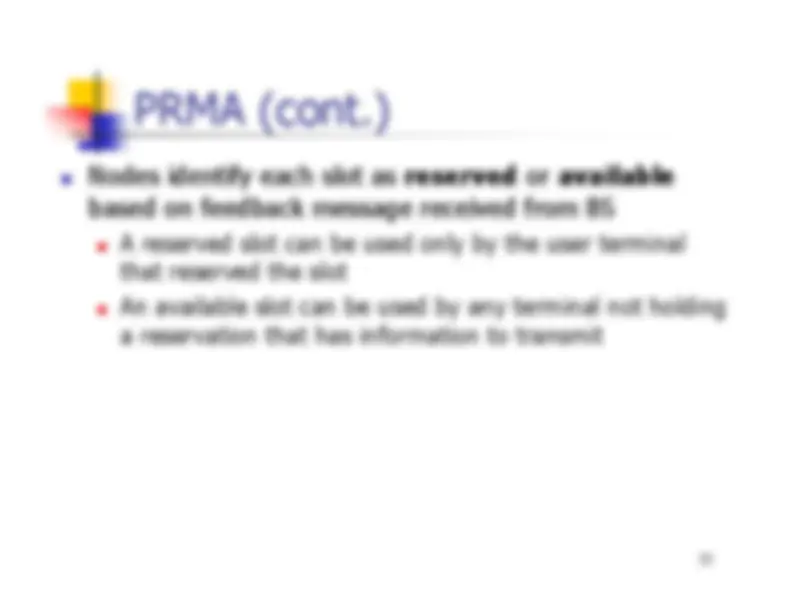
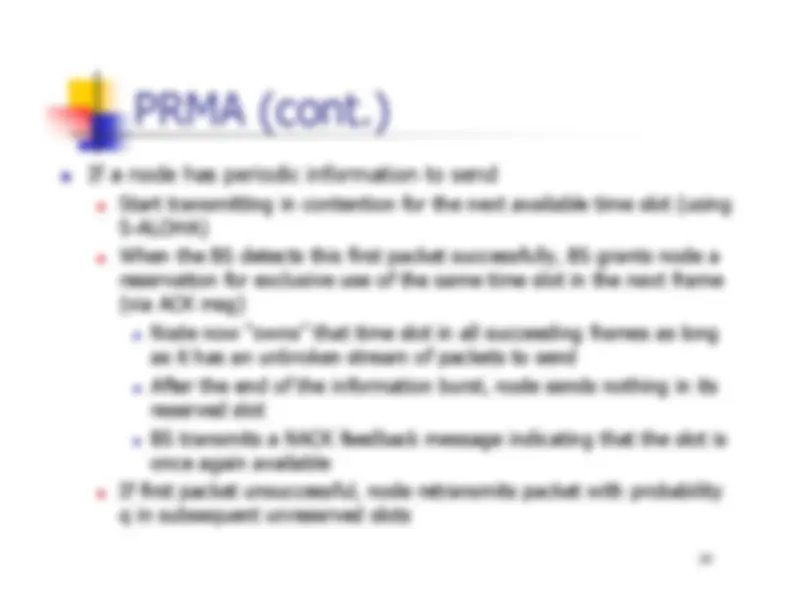
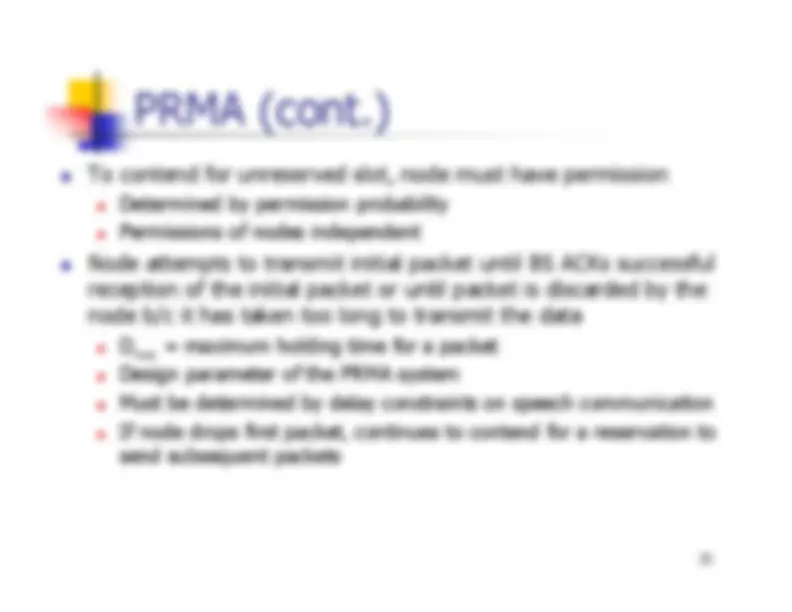
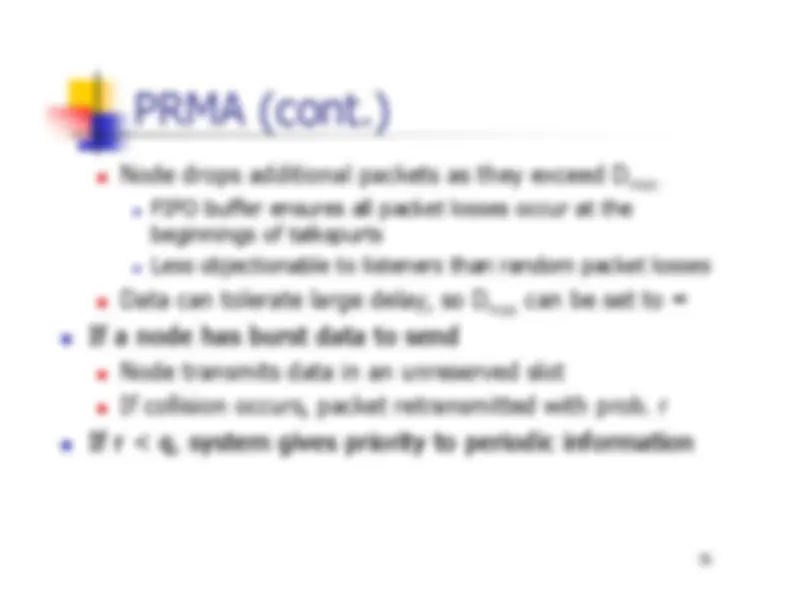
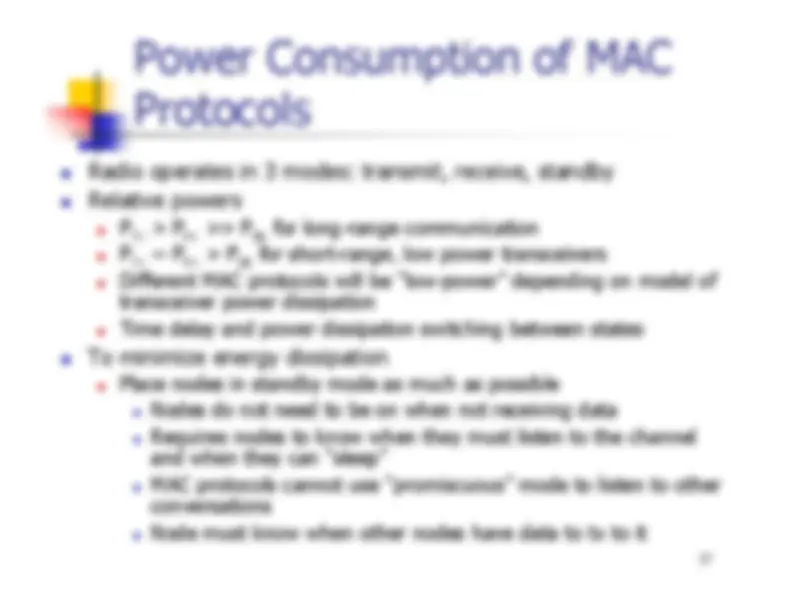
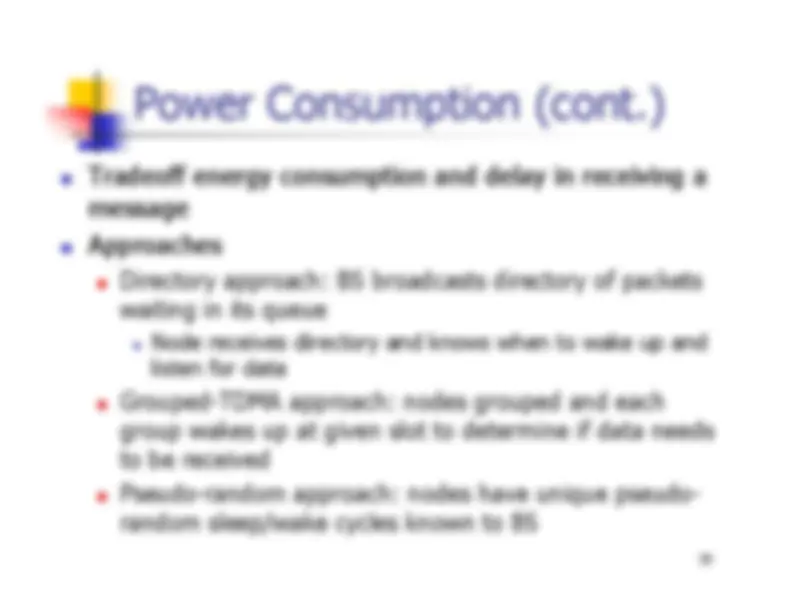
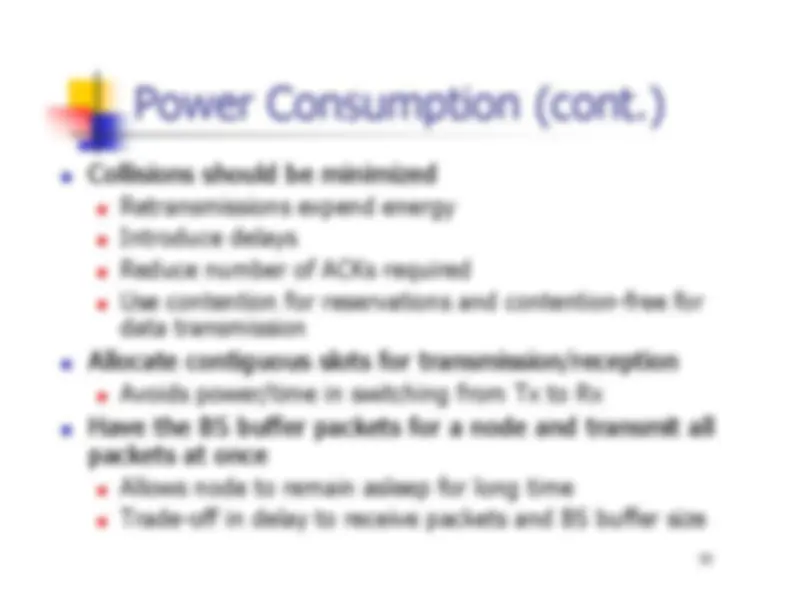
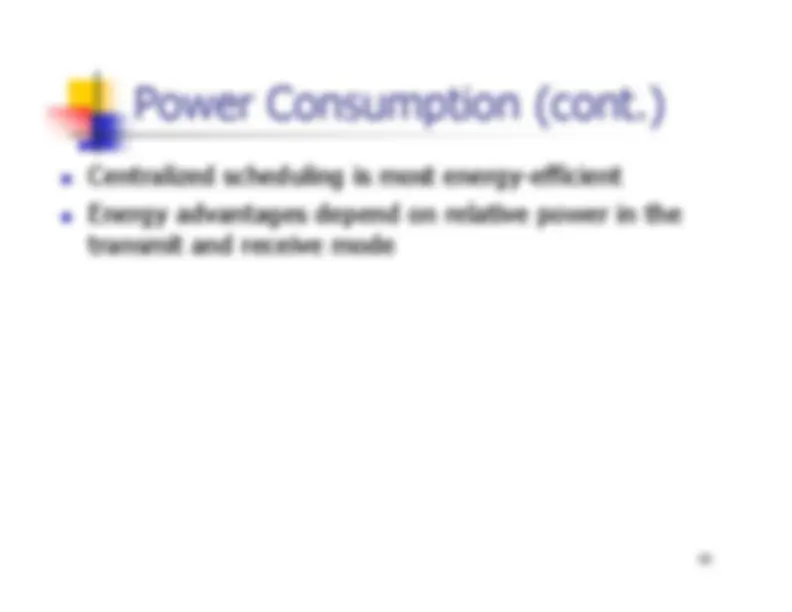


Study with the several resources on Docsity

Earn points by helping other students or get them with a premium plan


Prepare for your exams
Study with the several resources on Docsity

Earn points to download
Earn points by helping other students or get them with a premium plan
Community
Ask the community for help and clear up your study doubts
Discover the best universities in your country according to Docsity users
Free resources
Download our free guides on studying techniques, anxiety management strategies, and thesis advice from Docsity tutors
Location Dependent Carrier Sensing, Hidden Terminal Problem, Exposed Nodes, Capture Effect, CSMA, Collision Avoidance, Busy Tone Signaling, Data Sense, Multiple Access, DSMA, MACA, MACAWDS, WRRTS, MACAW, Backoffin, Distributed Foundation Wireless, DFWMAC, Controlled Random Access, MAC, Reservation ALOHA, Polling Techniques, Voice, Data, Packet Reservation, Multiple Access, Power Consumption, MAC Protocols
Typology: Slides
1 / 40

This page cannot be seen from the preview
Don't miss anything!

































V. Bharghavan, A. Demers, S. Shenker, and L. Zhang, "MACAW: A Media Access Protocol for Wireless LAN's," Proc. SIGCOMM '94 , September 1994, pp. 212-225.
D. Goodman, R. Valenzuela, K. Gayliard, and B. Ramamurthi, "Packet Reservation Multiple Access for Local Wireless Communications," IEEE Transactions on Communications, Vol. 37, No. 8, August 1989, pp. 885-890. - J.-C. Chen, K. Sivalingam, P. Agrawal, and S. Kishore, "A Comparison of MAC Protocols for Wireless Local Networks Based on Battery Power Consumption,"Proceedings of IEEE INFOCOM '98, April 1998.
CS depends on location of the node
Causes three problems
4
Suppose node B is transmitting to node A Node C will sense a busy channel However, node C could transmit to node D D is outside the range of node B No collision Node C (exposed node) backs-off
When receiver can cleanly receive a transmission fromone of two simultaneous transmissions
Often closest user captures receiver due to smallpropagation path loss
Node C capturesthe channel fromNode A
Throughput analysis typically assumes no capture and is a lowerbound on throughput in practice Upper bound on throughput can approach one if some station alwayscaptures the colliding packets True throughput lies somewhere between two bounds but closer tolower bound
Near-far effect: Nodes close to the receiver can easily capture thereceiver and prevent nodes further away from communicating withthe receiver Wireless MACs aim to ensure fairness in the presence of capture
Out-of-band signaling Receiving nodes transmit a signal to let nodes in their rangeknow that the channel is busy Eliminates hidden nodes Increases the number of exposed nodes BTMA, DSMA, etc. Control handshaking Each stage of the handshake lets nodes know if they are in rangeof the transmitter, receiver, or both Tradeoff in overhead for handshaking and the number of hiddennodes eliminated MACA, MACAW, etc.
Forward control channel used to inform nodes if reversechannel is idle or busy Nodes detect a busy-idle msg on forward controlchannel If busy-idle message indicates no users transmitting onreverse channel, a user can send its packet Does not eliminate collisions
Hidden terminal problem Exposed terminal problem
Precede data transmission with request-to-send (RTS) packet RTS contains length of expected data transmission (all phases) All nodes in vicinity of Tx node enter backoff for duration ofmessage delivery If Rx node successfully receives RTS, replies with a clear-to-send(CTS) packet CTS packet contains length of expected data transmission All nodes in vicinity of Rx node enter backoff for duration ofmessage delivery Upon receipt of CTS, Tx node sends data
Backoff
If RTS/CTS packets successful, most nodes know that channel isbusy and will defer their own transmissions Some nodes may not receiver RTS or CTS due to othertransmissions in their vicinity Data has a high probability of no collision
Packets destined to collide do not use much of the channel resources Packets that do require large amounts of channel resources have ahigh probability of being successfully transmitted Good policy!
If channel sensed idle, nodes can assume RTS-CTS unsuccessful andnode A is currently backed-off If channel busy, nodes must defer their own transmission
Transmitter (A) sends DS message after receiving CTS to informexposed nodes that A will now send data packet Nodes receiving DS must defer their tx for the allotted time
D must be lucky enough that the random time chosento transmit an RTS falls during the time between anACK and RTS from the A-B stream Use request-RTS (RRTS) messages
With every unsuccessful RTS, node will BO Node with successful RTS will have BO at minimum value Node with unsuccessful RTS will have BO at maximum value If no max BO, one node would eventually have infinite BO Other node would permanently capture channel High throughput but not fair allocation
Nodes receiving packet copy this BO value All nodes will have equal BO values
Upon collision, BO increased to min(1.5*BO, BO max
Upon success, BO decreased to max(BO-1, BO min